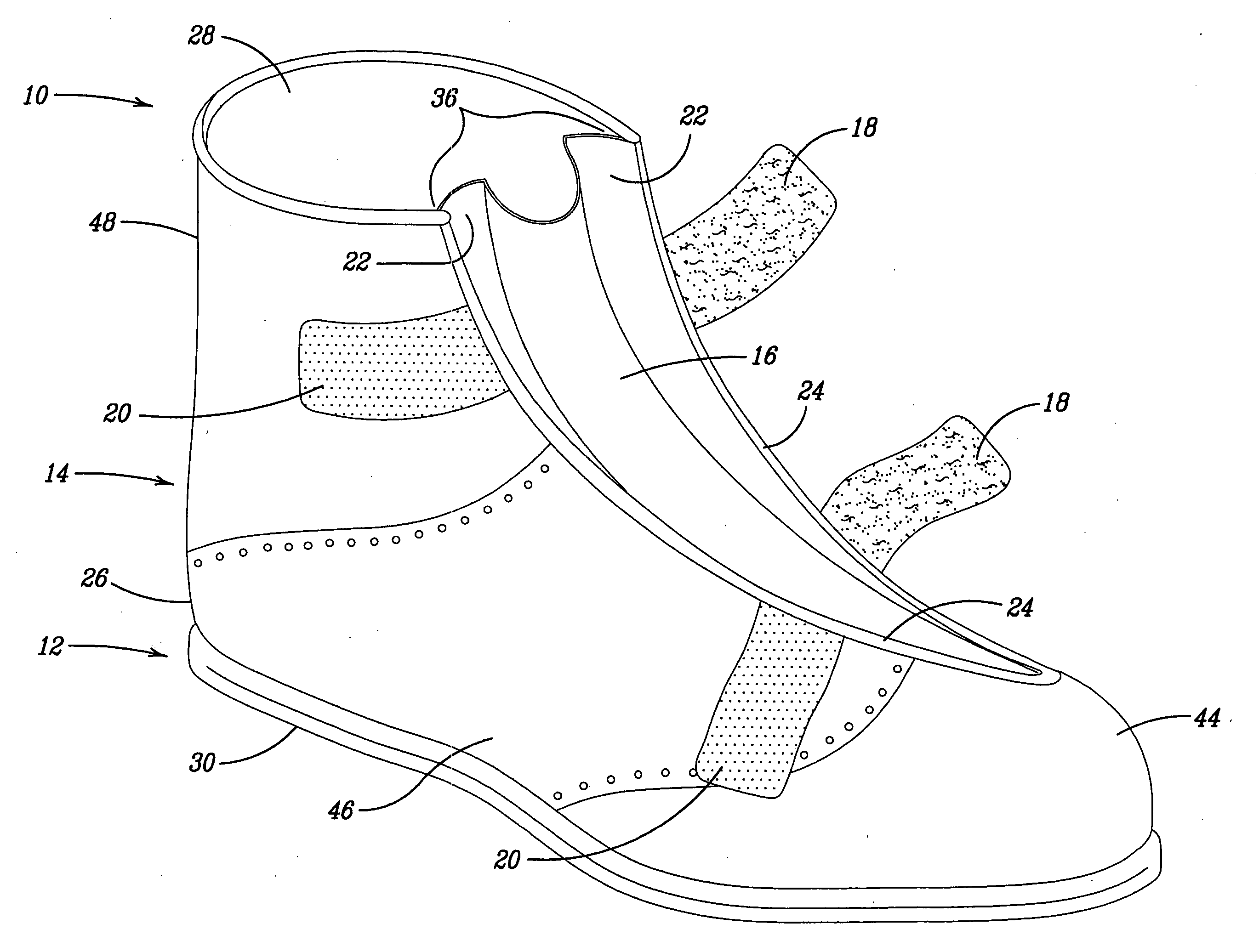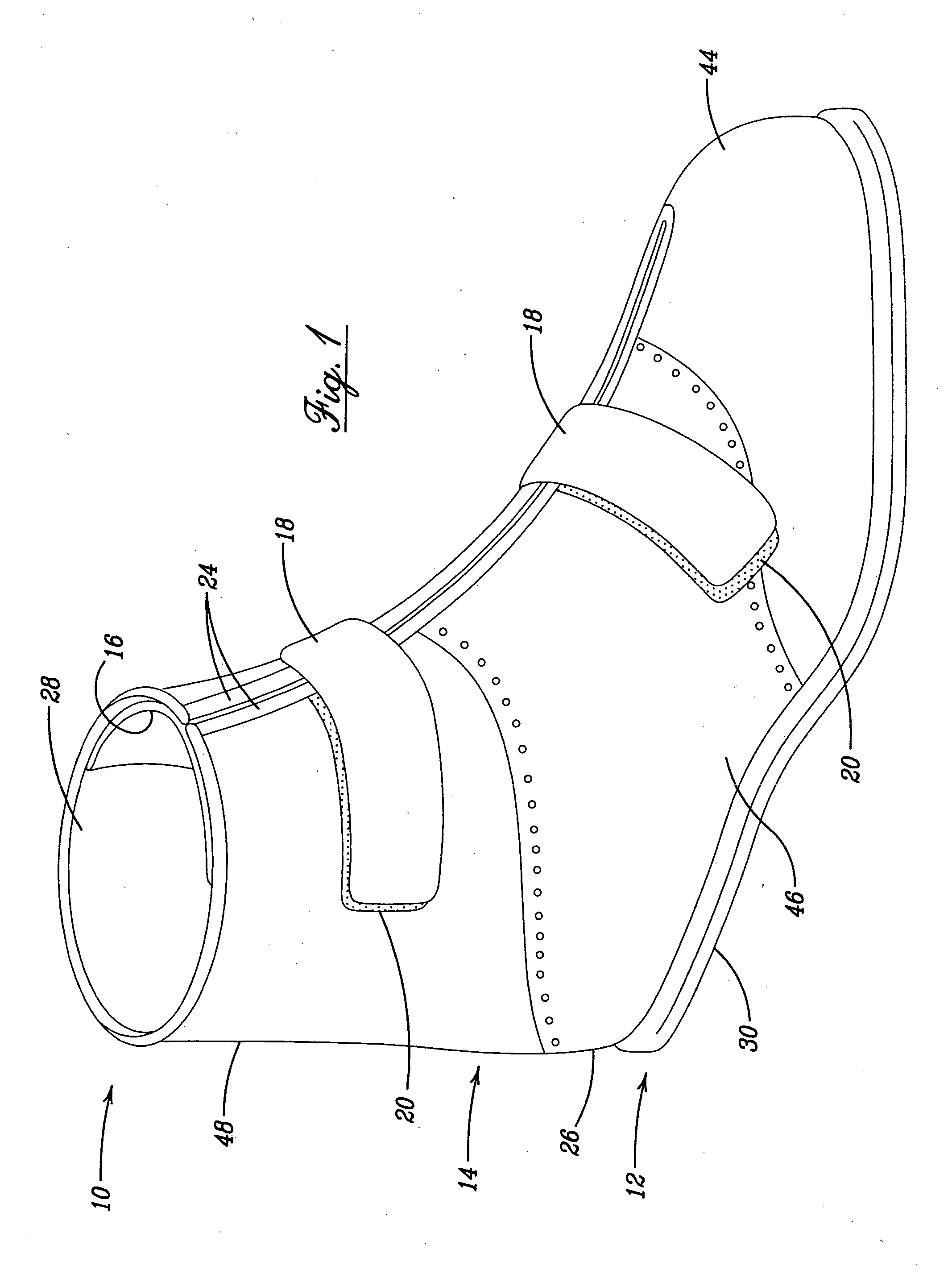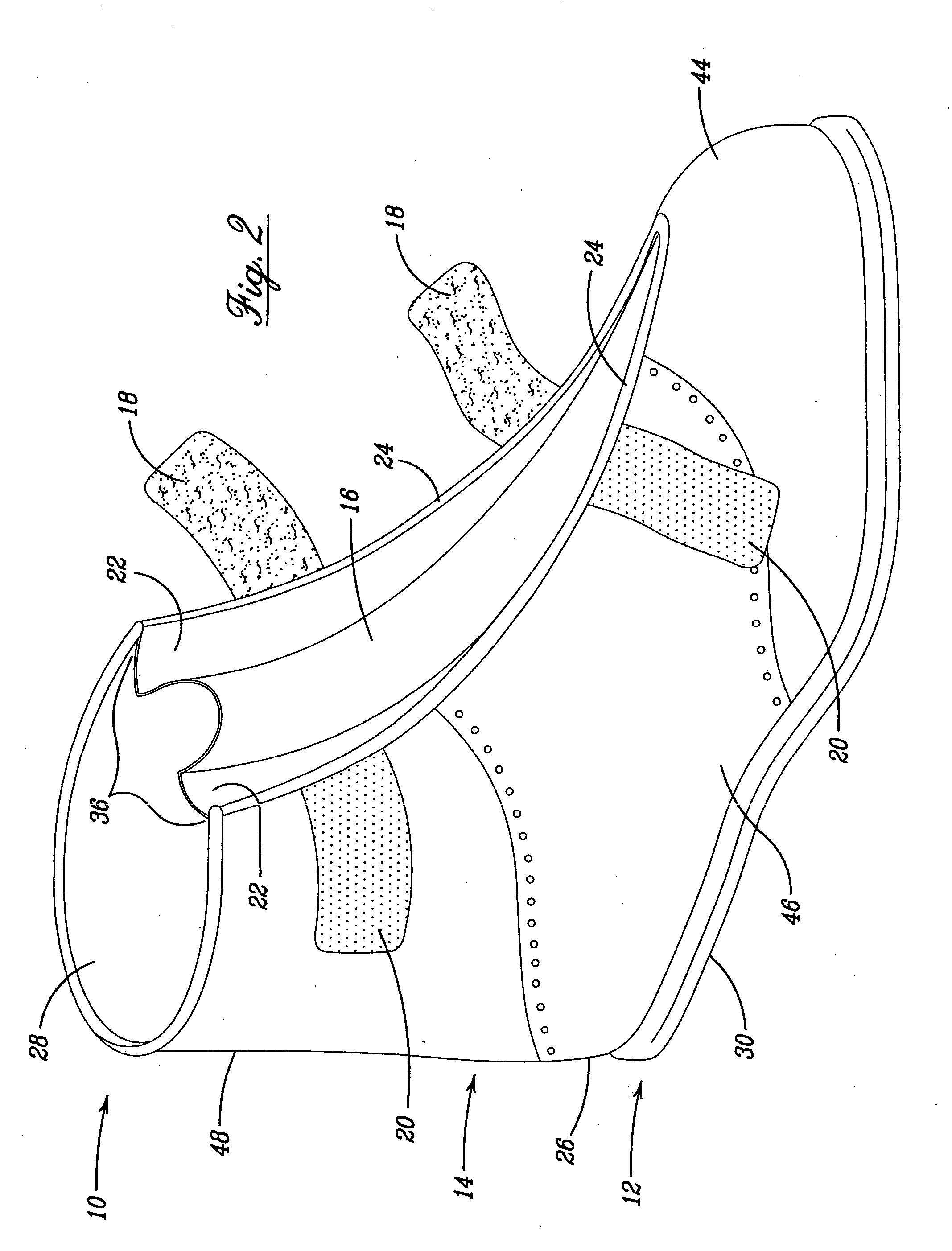Waterproof protective overshoe for golf shoes
a golf shoe and waterproof technology, applied in the direction of fastenings, footwear, apparel, etc., can solve the problems of water seeping into the shoe, affecting the performance of the golf shoe, and the golf shoe is not waterproof, so as to achieve the effect of easy removal
- Summary
- Abstract
- Description
- Claims
- Application Information
AI Technical Summary
Benefits of technology
Problems solved by technology
Method used
Image
Examples
Embodiment Construction
[0025] The following detailed description is of the best presently contemplated mode of carrying out the invention. The description is not intended in a limiting sense, and is made solely for the purpose of illustrating the general principles of the invention. The various features and advantages of the present invention may be more readily understood with reference to the following detailed description taken in conjunction with the accompanying drawings.
[0026] Referring now to the drawings in detail, where like numerals refer to like parts or elements, there is shown in FIG. 1 a perspective view of the waterproof protective overshoe boot for golf shoes 10 in the closed state and in FIG. 2 a perspective view of the overshoe boot 10 in the opened state. The golf shoe protective overshoe 10 is a watertight boot of unitary construction, comprising a sole portion 12 integral with a boot portion 14. The overshoe 10 is preferably cast as a single piece, to ensure structural integrity and ...
PUM
| Property | Measurement | Unit |
|---|---|---|
| perimeter | aaaaa | aaaaa |
| flexibility | aaaaa | aaaaa |
| hardness | aaaaa | aaaaa |
Abstract
Description
Claims
Application Information
 Login to View More
Login to View More - R&D
- Intellectual Property
- Life Sciences
- Materials
- Tech Scout
- Unparalleled Data Quality
- Higher Quality Content
- 60% Fewer Hallucinations
Browse by: Latest US Patents, China's latest patents, Technical Efficacy Thesaurus, Application Domain, Technology Topic, Popular Technical Reports.
© 2025 PatSnap. All rights reserved.Legal|Privacy policy|Modern Slavery Act Transparency Statement|Sitemap|About US| Contact US: help@patsnap.com



